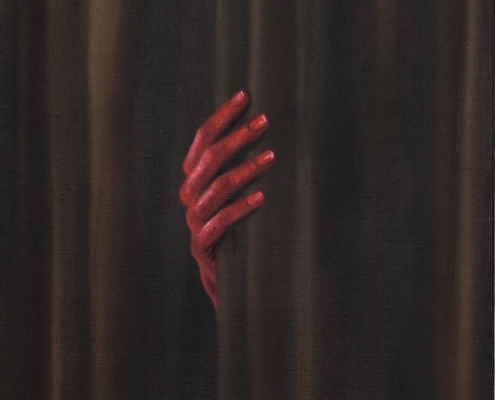In your artistic production you’ve been moving from a focus on the body to a focus on the space and the ambient. What triggered this?
I think I am doing both, in the beginning of my artistic career and now. Both are important subjects of my work and I am still switching between the two of them, so I can’t make out a turning point.
You are a Japan born artist, living now in Europe (Berlin). Here in Europe we often take for granted that the Oriental culture is more spiritual than ours. As you’ve been experiencing both, what’s your opinion? Do you reckon your roots have been influencing what you do?
I don’t know whether Oriental culture is more spiritual, I think this depends more on the person. Living abroad helps me to see myself clearer and see my own identity, because I am different. In Japan, I don’t differ as much from other people and this makes it harder to see myself.
When you have a bowl of salt water and the water dries up, and the salt crystalizes. The crystals have always been there, but you couldn’t see them in the liquid. Living abroad helps me seeing the crystals.
From a spectator’s point of view, seems like it takes a lot of time to assemble an installation and fill a room. Did it become a ritual for you?
With every installation it is great to see it grow and being realized. I prefer not to build models and visualize an idea before the set up but to make it reality during the set up. This is the same for any installations, may it be with windows or beds or threads.
Setting up the thread installations takes up an especially large amount of time but it is like meditation. The weaving of the thread can also be seen as an indicator of the current mind set – when I’m troubled the thread tangles up more irregularly and I make more knots. When I’m in a balanced mood, the weavings are more regular.
 https://www.nastymagazine.com/wp-content/uploads/2024/07/WEB2-1.jpg
823
895
Editor Nasty
https://www.nastymagazine.com/wp-content/uploads/2015/02/new-logo-basker-WHITE4.png
Editor Nasty2024-07-24 12:01:502024-07-24 12:02:03Mia Middleton / Fleeting Phenomena
https://www.nastymagazine.com/wp-content/uploads/2024/07/WEB2-1.jpg
823
895
Editor Nasty
https://www.nastymagazine.com/wp-content/uploads/2015/02/new-logo-basker-WHITE4.png
Editor Nasty2024-07-24 12:01:502024-07-24 12:02:03Mia Middleton / Fleeting Phenomena








